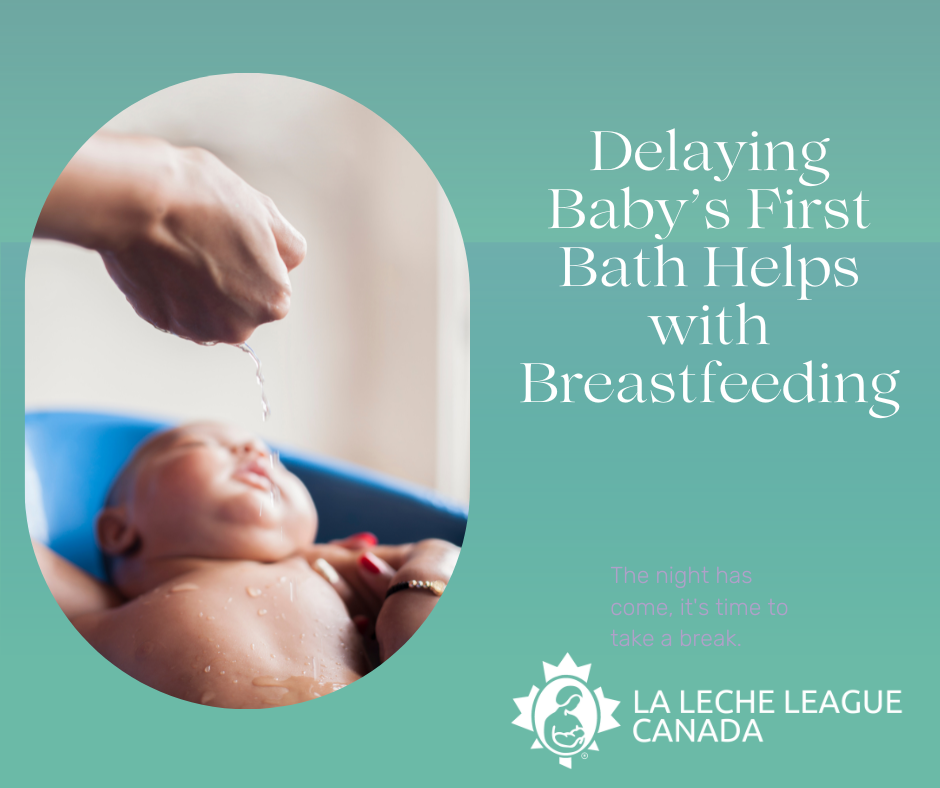
Standard practice in recent history has been for newborns to be bathed within the first hour or two after birth. It’s important to understand how this can negatively impact your baby and breastfeeding.
When babies are bathed after birth they are separated from their mothers at a time when they should be skin-to-skin on their mother’s chest. Skin-to-skin contact for at least the first hour and a half after birth helps your baby stabilize her breathing and body temperature. Your chest has the amazing ability to heat up or cool down in response to your baby’s temperature and can help your baby maintain the correct body temperature.
Breathing in and breathing out with your baby lying on your chest, helps your baby’s body adapt to this new skill. Skin-to-skin contact also gives your baby easy access to the breast, allowing your baby to initiate breastfeeding when he is ready, generally within the first hour after birth. (If you are not able to hold your baby skin-to-skin in the first hour or two after birth, a partner can do this until you are able to take over.)
Being born is stressful for babies and being separated from their parents right after birth can increase that stress. A baby who is taken away to be bathed shortly after birth is likely to release stress hormones which cause the heart rate and blood pressure to rise and blood sugar levels to fall. A distressed baby will find it harder to initiate breastfeeding.
Vernix caseosa, the white creamy substance found on your baby’s skin at birth, provides “waterproofing” while your baby is inside you. This appears to have a role in helping your baby’s skin adapt from the high humidity environment of the uterus to the much lower humidity levels found in the outside world. To learn more about vernix caseosa please visit Unraveling the mystery of vernix caseosa.
Even more important, studies suggest that vernix contains antimicrobial substances (peptides) which have a direct role in defending your baby against bacteria until he starts to receive immunity from antibodies in your milk. The vernix also acts as a physical barrier which helps protect your baby from infection. Canada’s Public Health Agency and The World Health Organization (WHO) recommend leaving vernix intact on the skin surface after birth and delaying the bath.
A 2010 study at the Boston University Medical Center showed a 166% increased rate of breastfeeding initiation in the hospital and a 39% increased rate of exclusive breastfeeding in the hospital when the first bath was delayed to approximately the 12th hour after birth.
Talk to your birthing team about delaying baby's first bath as one of the steps you take to get breastfeeding off to a great start. You can choose to delay it for several hours or even a day or two. Some parents may choose to wait up to a week before bathing their baby but it is not necessary to wait that long. See Preparing to Breastfeed for more information. If you have any questions about getting ready to breastfeed or about your breastfeeding experience call a La Leche League Canada Leader. You can find your nearest Leader or Group.
Please consider supporting LLLC.
References: Healthline. (2016, June 16). Benefits of the Vernix Caseosa During Pregnancy and Delivery. https://www.healthline.com/health/pregnancy/vernix-caseosa
Updated 2022
